Problems solving 2D: Focusing Effects (buried valley)
In the calculation there is a model with two lithologies and a regular topographic.
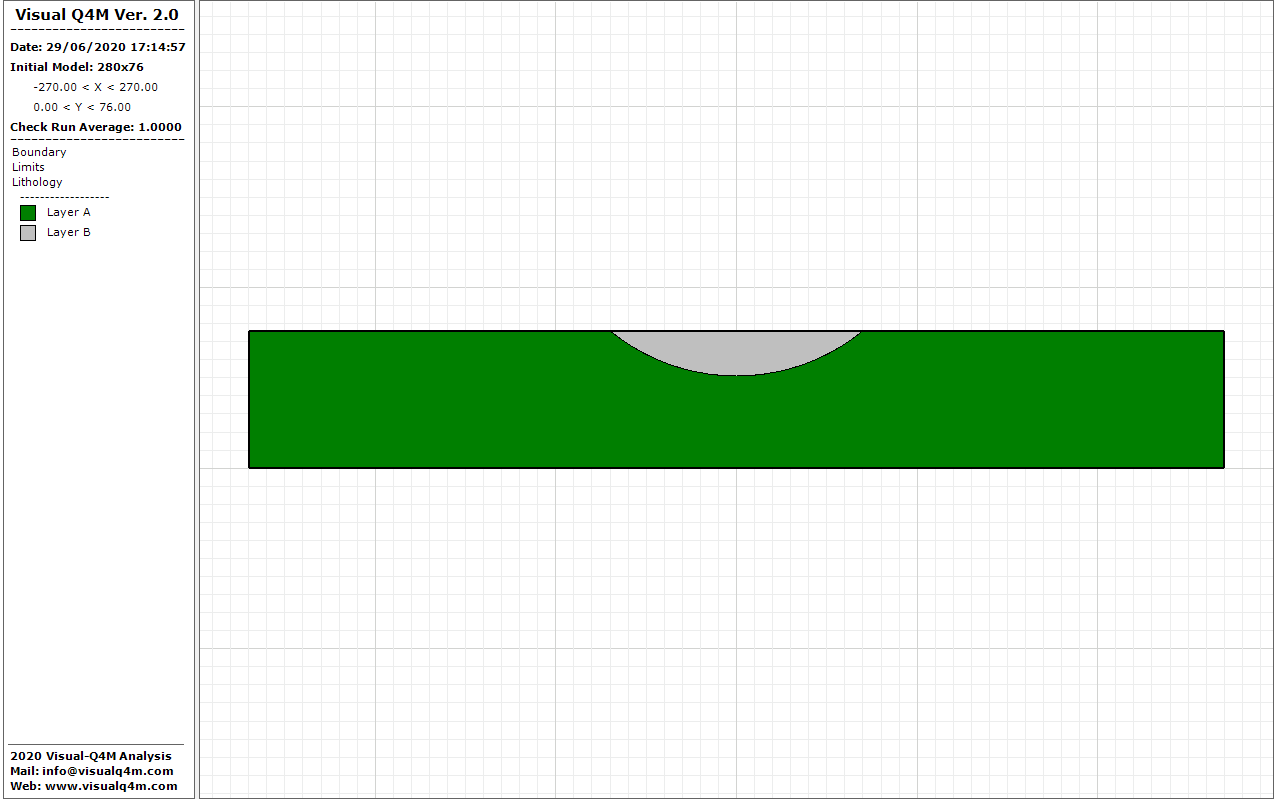
Geometry and Material Properties
For construction of model you can use the Grid-Block command and to generate three horizontal block and one in vertical on a DXF file.
Material Properties
| Layer | Density | Wave Vs | Shear Modulus | Poisson Ratio | Damping |
|---|---|---|---|---|---|
| A | 18000 N/m2 | 570 m/s | 5.960E8 N/m2 | 0.300 | 5.0 % |
| B | 19750 N/m2 | 210 m/s | 8.878E7 N/m2 | 0.300 | 5.0 % |
Boudary Conditions
The column have a behavior in shear and the vertical motion (Y) is inhibited to eliminate bending modes. The loading is applied to the base (XY).
You apply the load horizontal component only in the nodes with X-Direction locked:
- Node i = 1 j = 1-51 --> Fix Y-Direction
- Node i = 251 j = 1-51 --> Fix Y-Direction
- Node i = 1-251 j = 1 --> Fix XY-Direction
Input Motion
The horizontal input motion has a PGA: 0.225g to 4.150s, a Time Step dt:0.01s and Time: 20.0s. The Max Acceleration has been scale to 0.300(g).
-
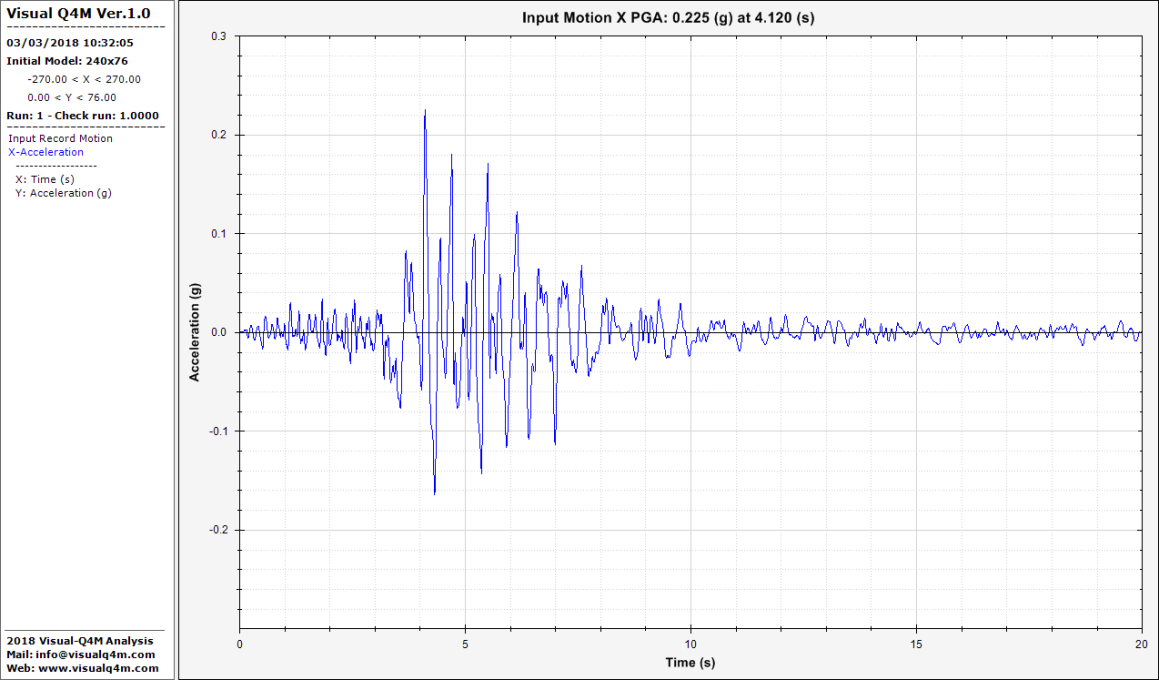
- Original Input Acceleration to 0.225(g)
-
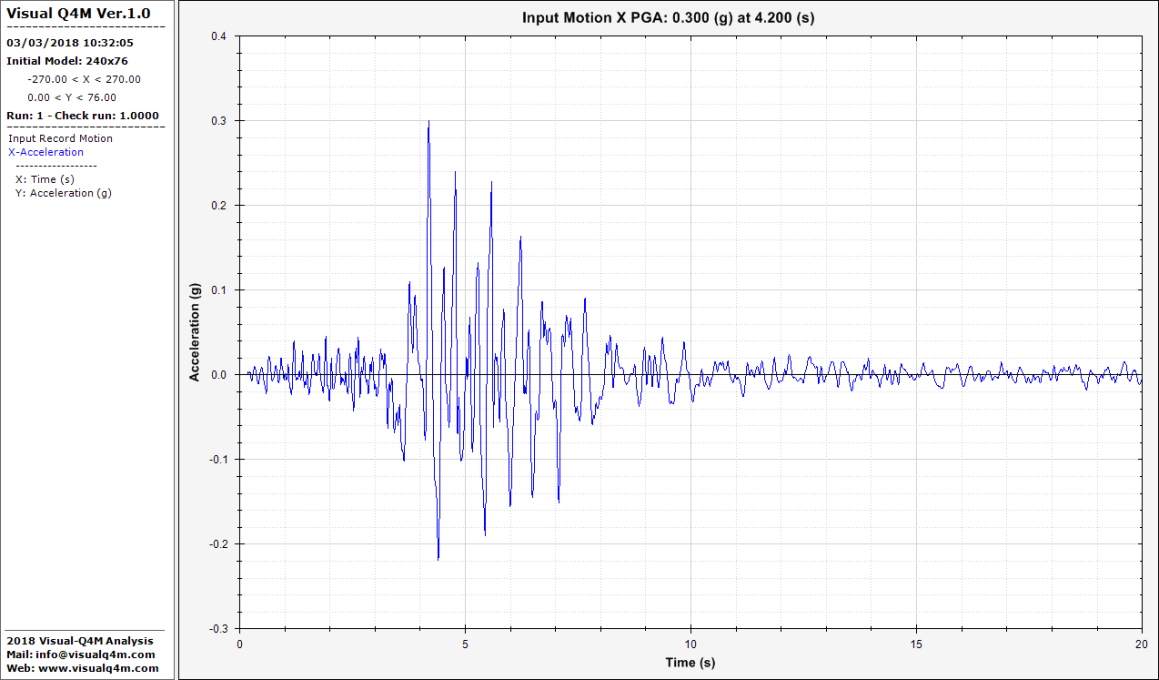
- Input Acceleration Update to 0.300(g)
Results
The buried valley creates a symmetrical area of focus of the seismic waves with a maximum X-Acceleration of 0.539(g).
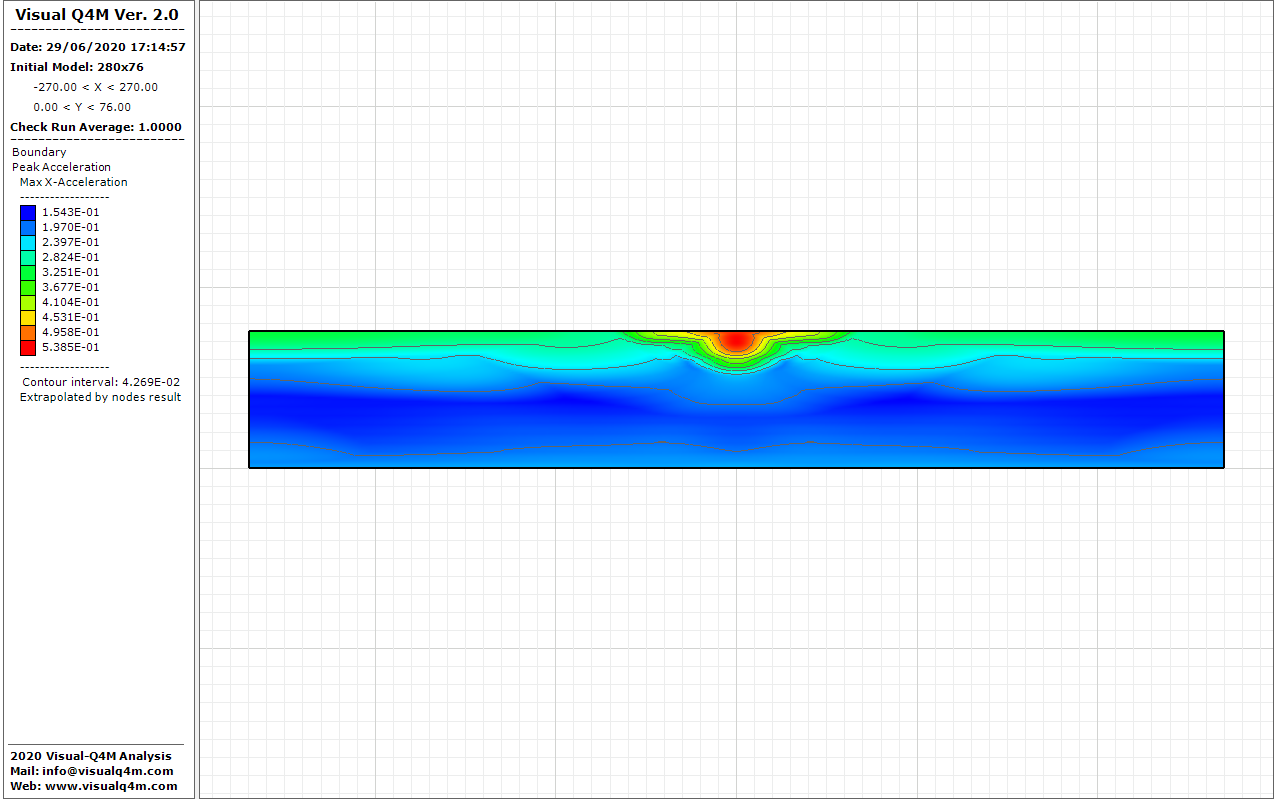
During the calculation cycle the acceleration in output on nodes 121,77 is monitored. The Acceleration Spectrum (shown below) is calculated and compared with the the Acceleration Spectrum of input.
-
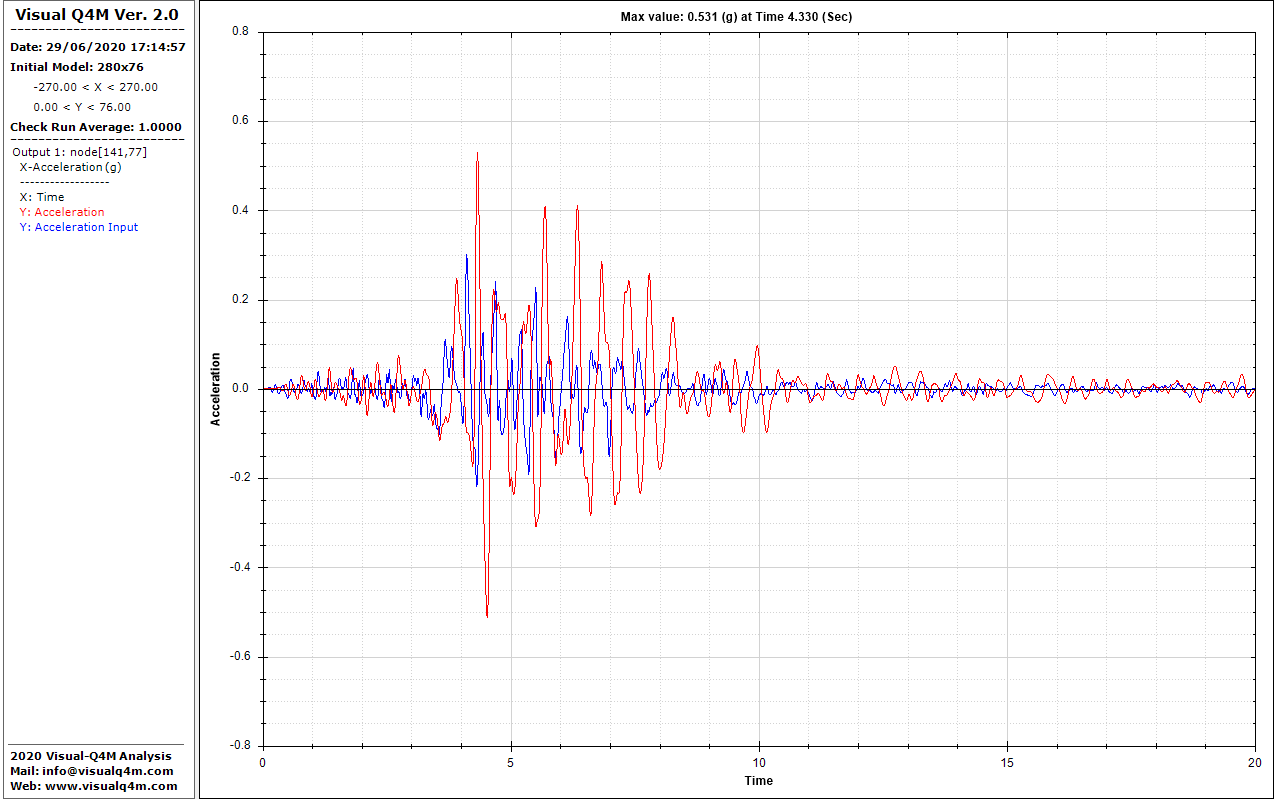
- Acceleration
-
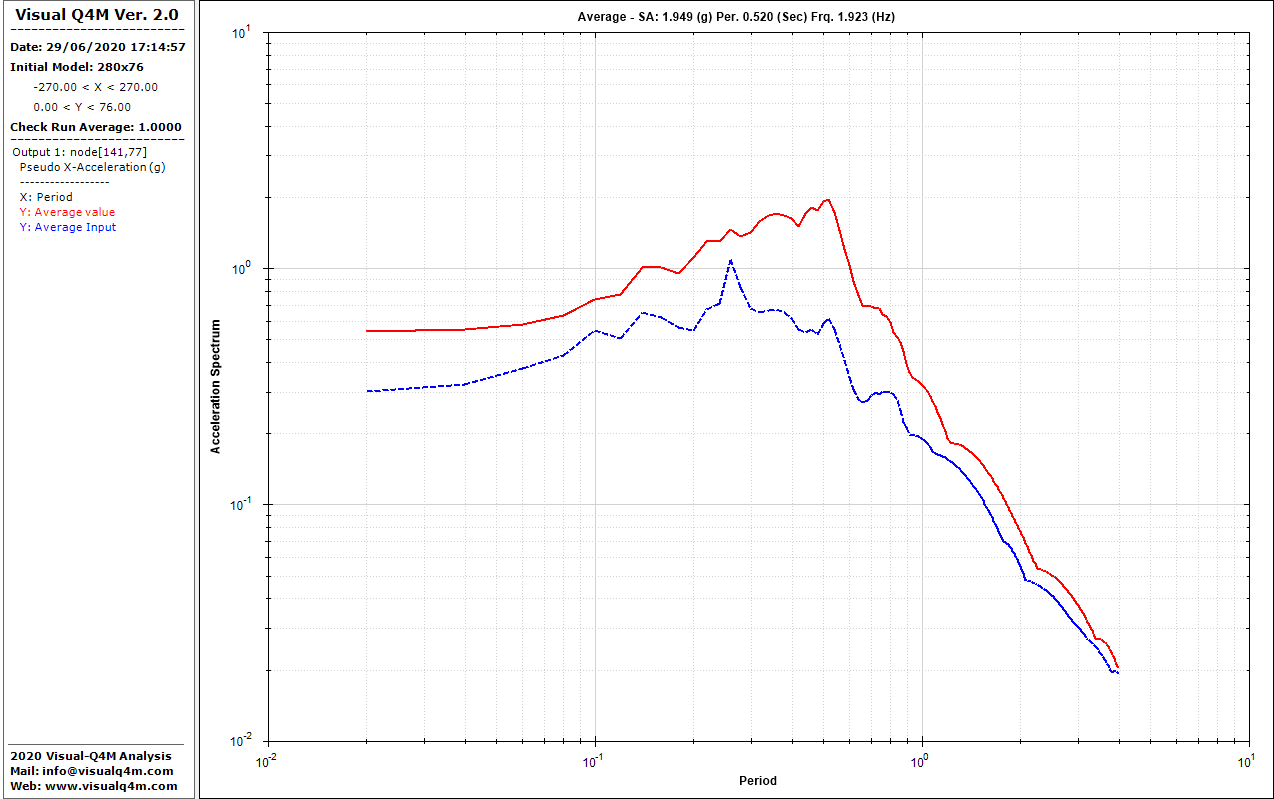
- Acceleration Spectrum